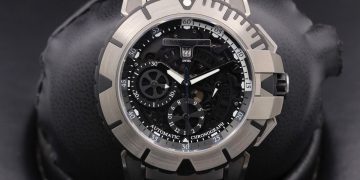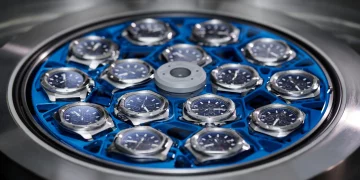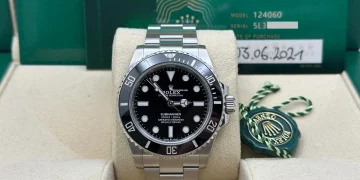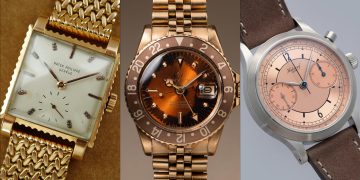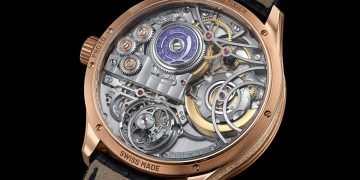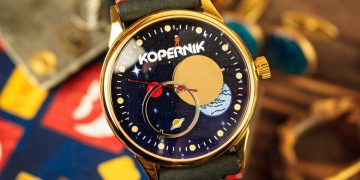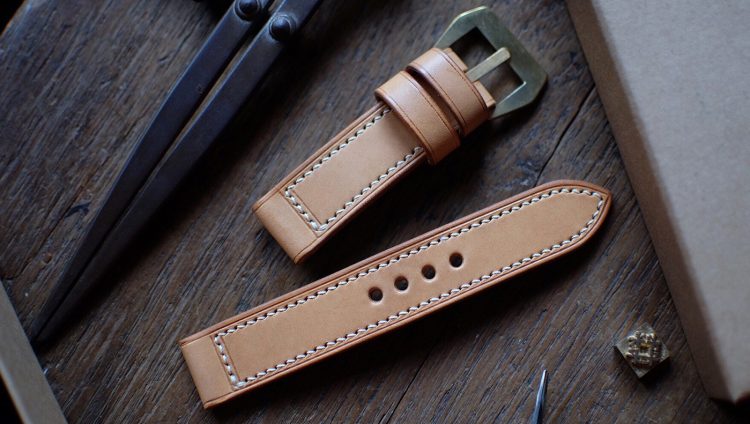The world of high-end watches has evolved dramatically over the years, not just in terms of movement precision and functionality, but also in the materials used to craft the various components of the timepiece. From the case to the strap, the materials chosen by watchmakers can dramatically influence the aesthetic appeal, comfort, durability, and overall performance of a watch.
Over the past few decades, advancements in material science have led to the creation of cutting-edge materials that have revolutionized watchmaking. These innovations go beyond simple cosmetic improvements—they have created timepieces that are lighter, stronger, and more resilient while still maintaining their luxury appeal. In this article, we will explore some of the key materials that have transformed watch design from the case to the strap, and how these materials have brought about significant changes in the way we experience and perceive luxury watches.
1. Revolutionary Materials for Watch Cases
The case of a watch is its most visible component. Over the years, watchmakers have experimented with a wide variety of materials, moving beyond traditional metals like stainless steel and gold to include more advanced, high-tech materials. These innovations have had a profound impact on the design, feel, and functionality of luxury watches.
Ceramic: A Lightweight and Scratch-Resistant Game Changer
One of the most significant material innovations in recent years has been the widespread use of ceramic in watch cases. Ceramic is a highly durable and scratch-resistant material that is significantly lighter than metals like steel or titanium. This has led to the development of watches that are both tough and comfortable to wear.
- Advantages of Ceramic: Ceramic’s resilience to scratches and abrasions makes it an ideal material for high-end watches. It maintains its appearance over time, even with daily wear, without showing signs of wear and tear. It’s also highly resistant to fading, ensuring that the watch’s original luster remains intact.
- Aesthetic Appeal: Ceramic watches have a unique smooth, glossy finish that is both modern and luxurious. Many watchmakers offer matte or glossy ceramic finishes, which adds a striking visual contrast to traditional metals.
- Popular Ceramic Watches: Brands like Omega, Hublot, and IWC have incorporated ceramic into their watch designs, creating timepieces that blend elegance with practicality.
Titanium: Lightweight, Strong, and Corrosion-Resistant
Titanium is another material that has revolutionized the watch case design. Known for its exceptional strength-to-weight ratio, titanium is much lighter than stainless steel, making it ideal for people looking for a comfortable and durable timepiece. It’s also highly corrosion-resistant, making it a popular choice for sports and diving watches.
- Advantages of Titanium: Titanium is significantly lighter than steel, making it ideal for larger watches or those designed for daily wear. It’s also hypoallergenic, making it an excellent option for people with sensitive skin.
- Appearance: Titanium has a matte grey finish, which gives it a more modern and sporty look compared to traditional stainless steel. Though not as reflective as polished metals, titanium’s understated elegance is part of its appeal.
- Popular Titanium Watches: Brands like Breitling, Seiko, and Grand Seiko have embraced titanium in their designs, using it to craft watches that are both lightweight and robust.
Carbon Fiber: Strength, Lightness, and a Modern Aesthetic
Carbon fiber is a high-tech material commonly used in motorsports and aerospace industries, but it has found a place in the luxury watch market due to its exceptional strength, lightweight nature, and unique look. Carbon fiber is made from thin strands of carbon that are woven together and then cured to create a material that is incredibly strong yet lightweight.
- Advantages of Carbon Fiber: Carbon fiber is incredibly resilient and resistant to scratches and impacts. It’s also very light, making it ideal for large watch cases that need to remain comfortable to wear.
- Aesthetic Appeal: The woven pattern of carbon fiber gives watches a distinctive, modern, and slightly industrial look. Its matte finish and textured surface make it a popular choice for sports and diving watches, as well as high-tech timepieces with a futuristic appeal.
- Popular Carbon Fiber Watches: High-end watchmakers like Richard Mille, Hublot, and Tag Heuer have used carbon fiber in their cases to produce timepieces that are both lightweight and avant-garde in design.

2. Material Innovations in Watch Straps
The watch strap is the part of the timepiece that directly interacts with the wearer, and its material choice has a significant impact on the comfort and aesthetic appeal of the watch. Over the years, traditional leather and metal straps have been joined by a wide range of new materials that bring both practicality and luxury to the wrist.
Rubber and Silicone: Flexibility and Durability
Rubber and silicone straps have become highly popular for luxury sport watches. These materials offer exceptional flexibility, comfort, and water resistance, making them ideal for watches worn during active pursuits like diving, swimming, or outdoor adventures.
- Advantages of Rubber/Silicone: Rubber straps are extremely durable and resistant to water, heat, and UV light. They are also lightweight and provide a soft and comfortable fit against the skin. Silicone, a refined version of rubber, is hypoallergenic, which is important for wearers with sensitive skin.
- Aesthetic Appeal: Modern rubber and silicone straps come in a wide range of colors, textures, and finishes. Many high-end watchmakers offer rubber straps with sophisticated designs that incorporate carbon fiber accents or metal clasping systems, giving them a premium look.
- Popular Rubber Watches: Brands like Audemars Piguet, Rolex, and Patek Philippe offer high-end sports watches with rubber straps that combine comfort with performance.
Alligator Leather: Timeless Luxury
For dress watches, alligator leather has long been considered the ultimate strap material, offering a level of sophistication that is hard to match. The unique texture, durability, and premium appeal of alligator leather make it a favorite choice for luxury watch collectors.
- Advantages of Alligator Leather: Alligator leather is durable and retains its shape and texture for many years. It is also water-resistant to a degree, but it must be treated carefully to maintain its luster. Its softness and premium texture make it an extremely comfortable strap for formal occasions.
- Aesthetic Appeal: The distinctive pattern of alligator leather, with its smooth and shiny finish, is one of the hallmarks of elegance and sophistication in watch design. Its rich, classic look complements dress watches and adds a touch of luxury to any timepiece.
- Popular Alligator Leather Watches: Watchmakers like Jaeger-LeCoultre, Vacheron Constantin, and Breguet often use alligator leather straps on their dress watches, making it synonymous with classic luxury.
NATO Straps: Versatile and Functional
While NATO straps are often associated with military or tool watches, their simplicity, durability, and affordability have made them increasingly popular among casual and luxury watch enthusiasts. Made from nylon or canvas, NATO straps are known for their strength and versatility.
- Advantages of NATO Straps: NATO straps are breathable, lightweight, and highly adjustable, making them perfect for active wear. They are also affordable, making them an accessible option for those looking to change the look of their watch easily. The woven fabric can handle moisture and wear without compromising comfort.
- Aesthetic Appeal: NATO straps come in a wide variety of colors and designs, from military-inspired olive greens and navy blues to more vibrant and patterned versions. While they have a more casual look, high-end watchmakers have begun to offer premium NATO straps made from leather or high-end fabrics to elevate the style of sportier models.
- Popular NATO Straps: Brands like Omega, Rolex, and Marathon often offer NATO straps as a more rugged and versatile option for their military or diving watches.
3. Conclusion: The Future of Watch Design Materials
Materials innovation has transformed the world of watchmaking, giving luxury timepieces a new level of functionality, comfort, and aesthetic appeal. From the development of ceramic, titanium, and carbon fiber cases to the use of rubber, alligator leather, and NATO straps, each material has its unique set of advantages that cater to different lifestyle needs and design preferences.
As technology continues to evolve, we can expect even more innovative materials to influence the future of watchmaking. Whether it’s for enhanced performance, sustainability, or simply a new aesthetic, these material advancements will undoubtedly continue to shape the way we experience and appreciate luxury watches for years to come.
By understanding how material choices influence both the functionality and design of a timepiece, consumers can make more informed decisions when selecting watches that best align with their personal style and needs. The right materials can enhance both the longevity and wearability of your watch, ensuring that it remains an investment in both luxury and practicality.



